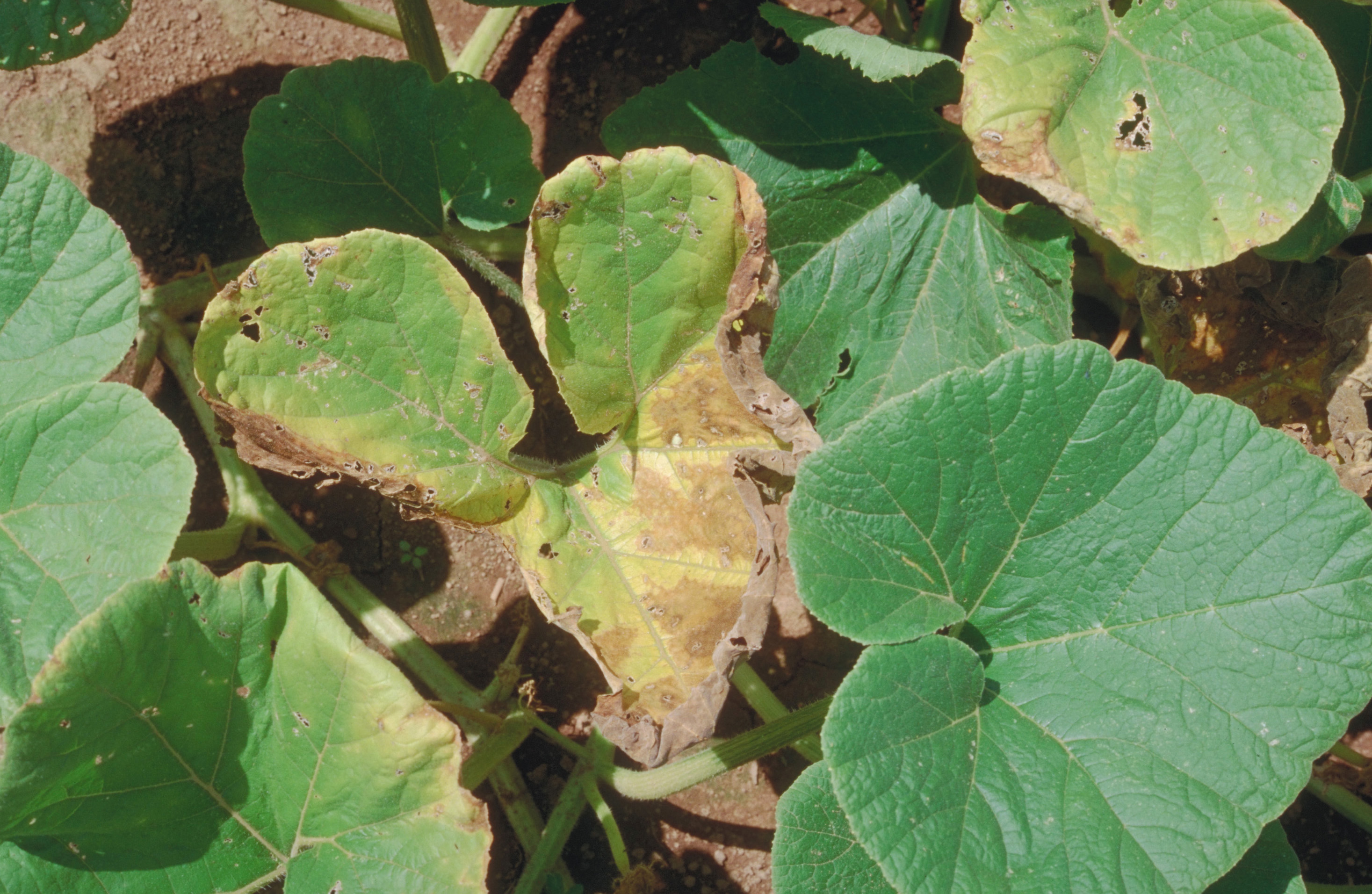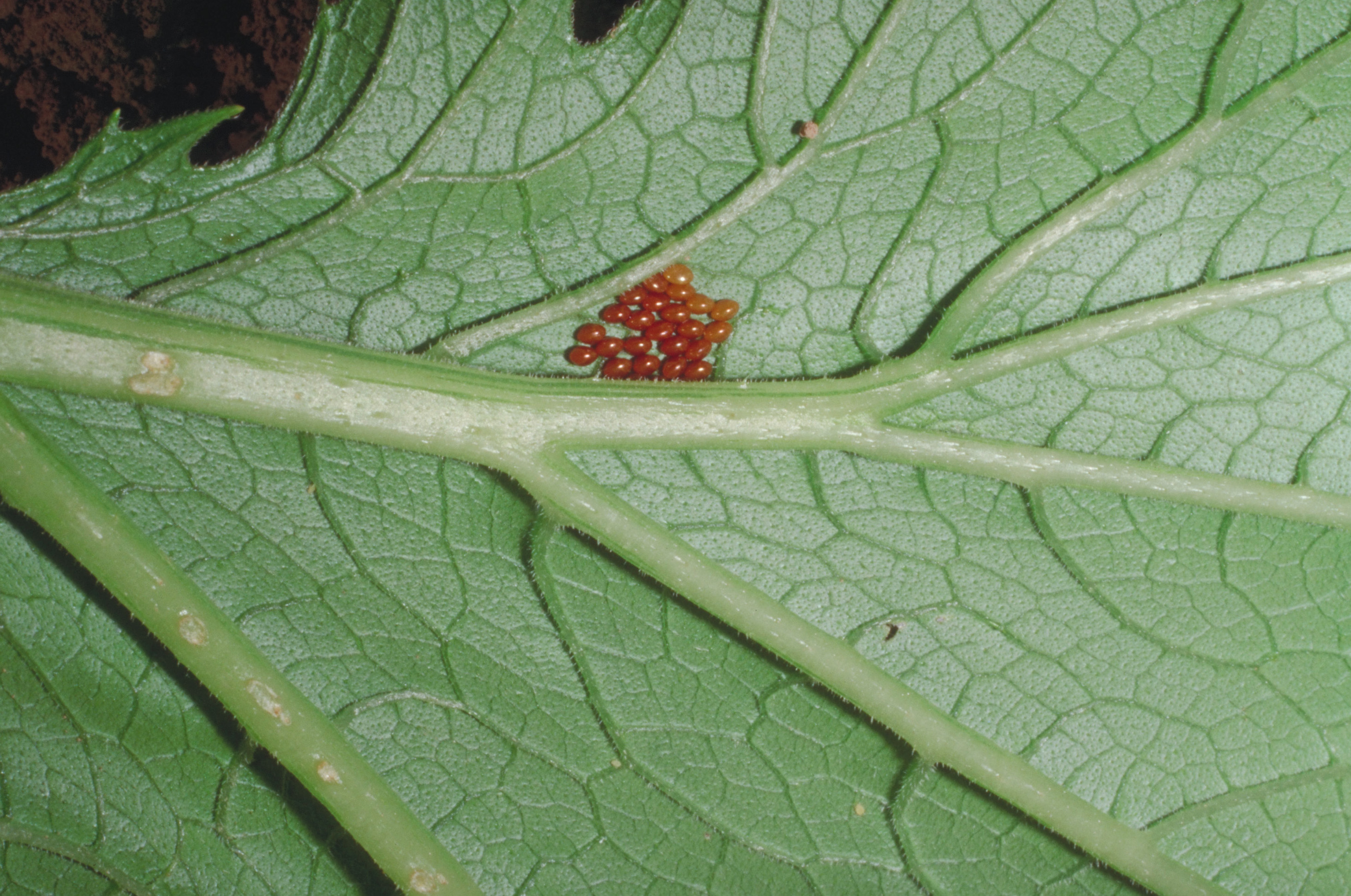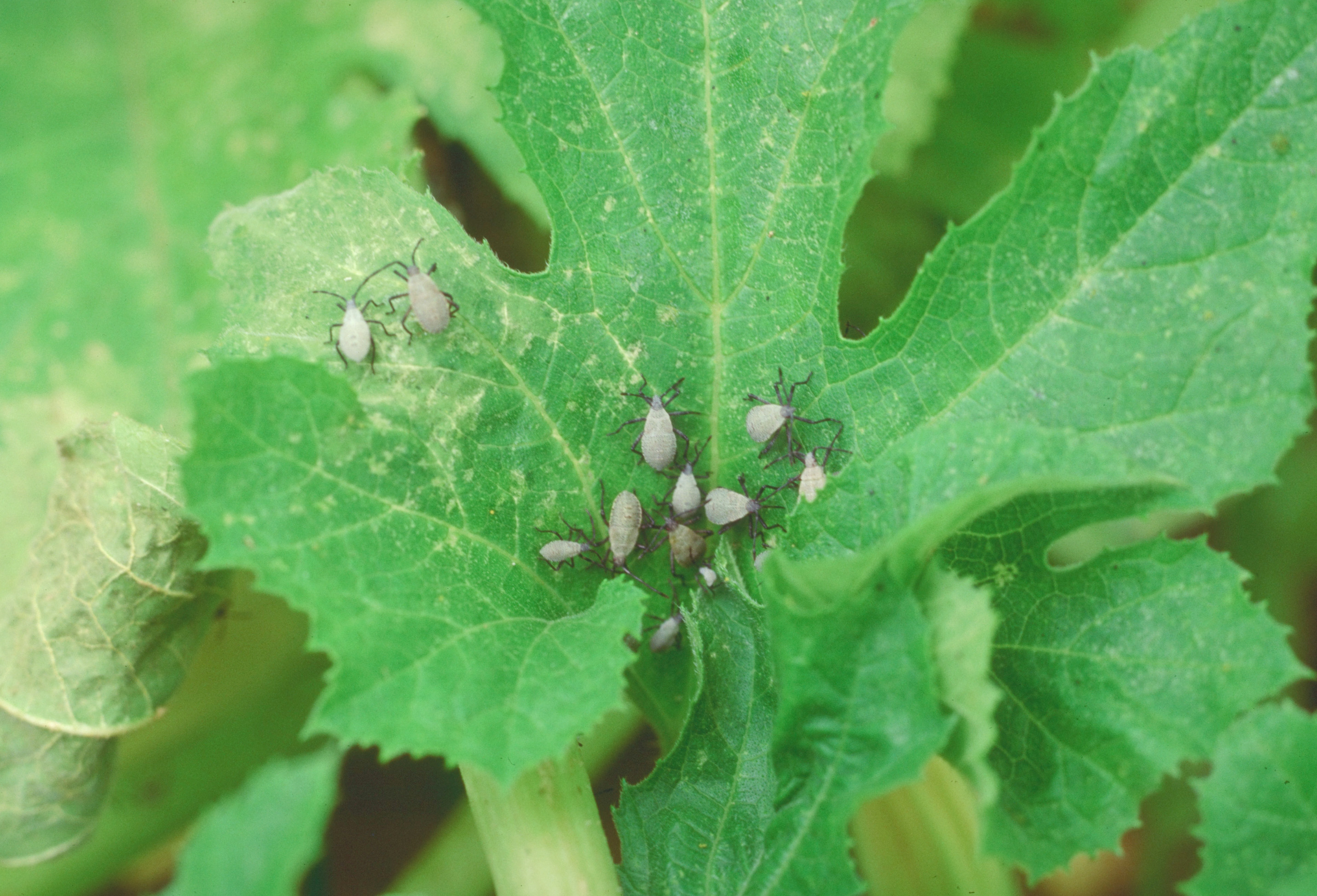Squash Bug on Cucurbit Crops
Return to Insect Pests
Squash bug (Anasa tristis) is brown and about 1 inch in length. Adults move into fields in early June and damage plants by removing sap as well as causing leaves to wilt and collapse. With newly set plants, the adults may feed on the stem base near the soil. Young plants may be killed, and infested leaves on older plants may wilt. More importantly, this insect is the vector of a newly recognized disease of cucurbit crops (yellow vine decline) that affects melons, watermelon, and pumpkins. The bronze eggs are football-shaped and lie on their sides in groups of 12 or more. Eggs hatch in one to two weeks. Initially, the nymphs are dark with a light green abdomen. Older nymphs are light gray in color with black legs. Young nymphs feed together in groups and require five to six weeks to mature into adults. While all the cucurbit crops can be attacked, squash bugs show a preference for squashes and pumpkins. This insect can be very difficult to control in mid- and late summer if populations are allowed to build up.
Squash bug adult.
(Photo: Ric Bessin, University of Kentucky)

Squash bug damage.
(Photo: Ric Bessin, University of Kentucky)

Squash bug eggs.
(Photo: Ric Bessin, University of Kentucky)

Squash bug nymphs.
(Photo: Ric Bessin, University of Kentucky)
Management:
- Timing is the key to successful squash bug control, and eliminating squash bugs is the key to management of yellow vine decline. Because this insect is a persistent vector, disease management is dependent on control of the vector.
- Use insecticides to control squash bug as soon as the plants are set or seedlings emerge in the field. Systemic insecticides used for cucumber beetle control will provide up to three weeks of squash bug suppression. Foliar sprays targeting newly hatched nymphs are more effective than sprays used against larger stages. Multiple foliar sprays are often needed for extended periods of control.
